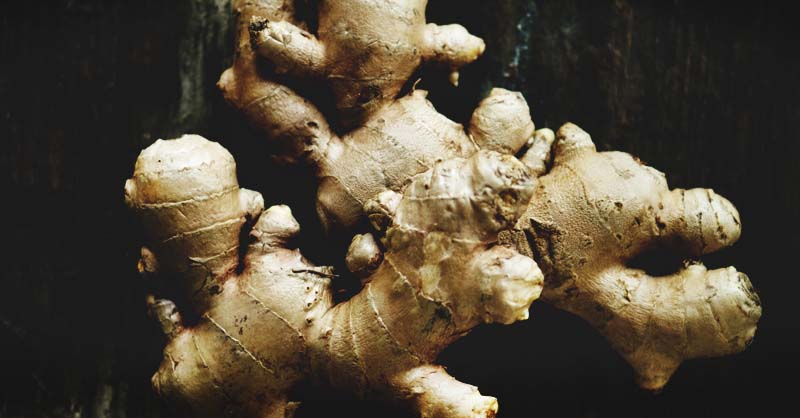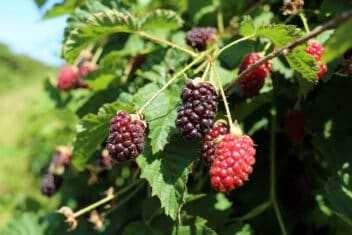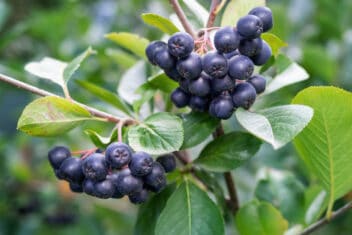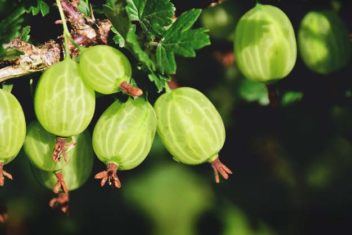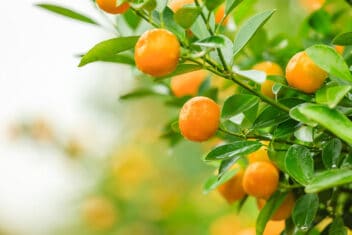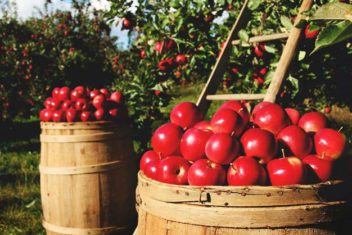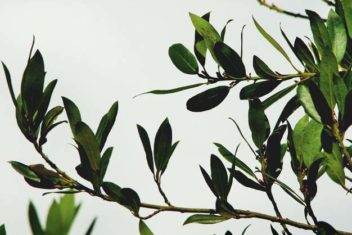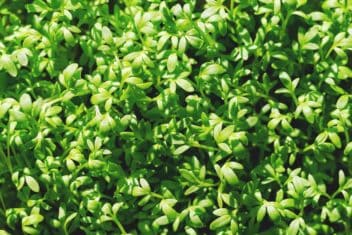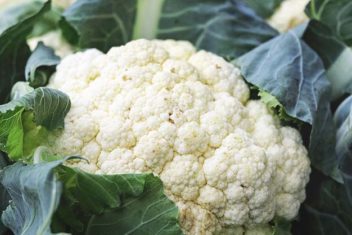No other plant in the world that has the distinctive taste and aroma of ginger. The moment you cut into the fresh rhizome, your kitchen fill with a spicy, peppery, citrus scent that is unmistakable.
Ginger is famous for its culinary uses, but it has tons of medicinal properties as well. It’s useful for the relief of pain, nausea, and inflammation. Not to mention all of the ways you can use it around the house, from a soothing foot scrub to an all-purpose cleaner.
Growing ginger is so rewarding because most people think it’s too exotic to grow at home. Nothing could be further from the truth. You can plant store-bought rhizomes and it’s relatively pest free. If you’ve been intimidated from growing ginger in your garden, make this your year to give it a go. It’s not as hard as you might expect, and harvesting fresh ginger is such a thrill.
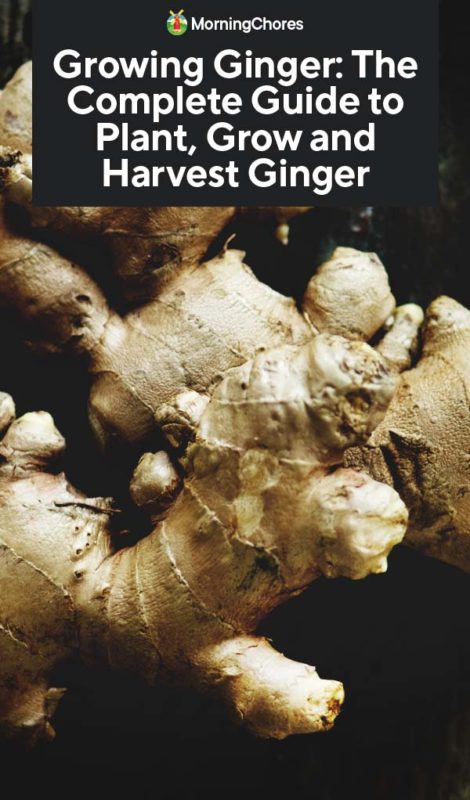
Ginger Varieties
Chinese or Common Ginger
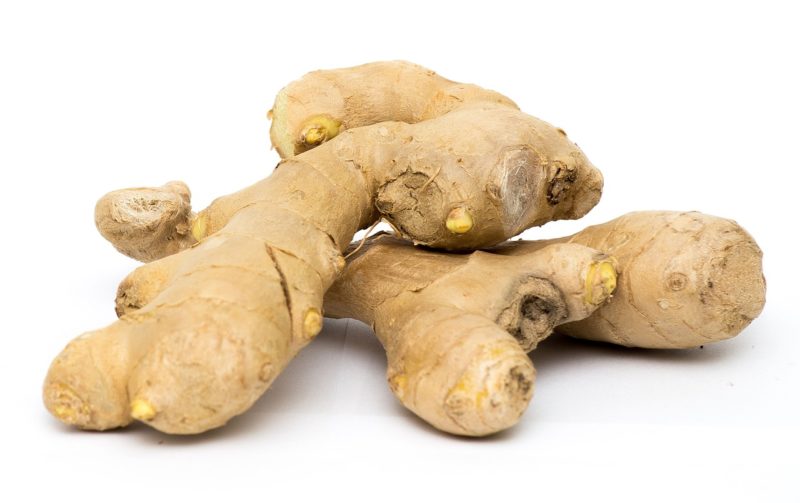
Chinese or common ginger is the kind you’ll find in the grocery store. It’s usually imported from China and sometimes India. Most cultivars are named after the area where they are grown. They include:
- Rio de Janeiro
- Nadia
- Gandzhou
- Shandong Laiwu
- Guangzhow
Don’t be concerned about all the varieties. If you buy from a grocery store, you will have a Chinese or Indian ginger that you can plant and reproduce in your garden.
Japanese
Japanese ginger is smaller than Chinese ginger but has a more intense flavor. You can use it as you would Chinese ginger. Variations include:
- Sunti
- Kintoki
- Sanshu
- Oshoga
There are other types of ornamental ginger varieties that produce beautiful flowers, but the edible/common ginger produces only leaves.
How to Grow Ginger
Zones
Ginger thrives in zones 7 and higher. Consider growing ginger in containers if you live in zones 6 or below so that you can move the inside or under cover when temperatures go below 50°F.
Sun and Soil Requirements
Ginger grows in very hot and humid parts of the world. It prefers warmth and partial shade. Ginger needs mildly acidic soils for healthy growth of rhizomes. Ensure that your soil pH is between 5.5-6.5.
Grow in well-draining soil that has been fed with fertilizer. Add plenty of rotted manure or compost before putting your rhizome in the ground. If you plant ginger in pots, use a fertilizer created for container plants. Ginger likes soil rich in organic matter.
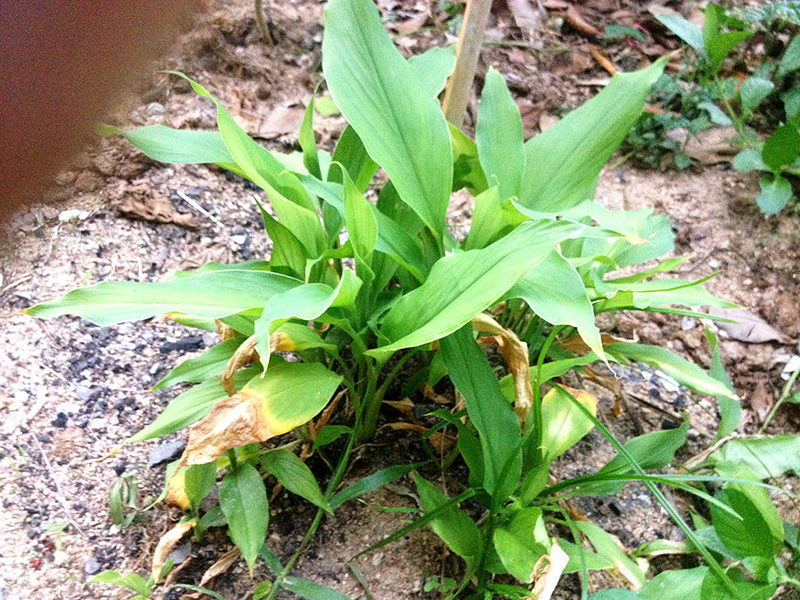
When to Plant Ginger
Plant ginger in the ground when temperatures are between 68-86°F. Ginger does not winter well so ensure any risk of frost is over or plant in containers if you aren’t sure.
Once planted, ginger requires about seven months minimum to develop a decent sized rhizome, so it needs a long growing season.
Planting Rhizomes
You can plant the ginger that you buy from the grocery store, or you can purchase rhizomes from a nursery. Choose ones that have or have started to develop growth buds. You can cut the ginger in sections as long as each section has at least one growth bud.
You can soak the ginger rhizomes in water overnight before planting, but I never have and my ginger has always grown fine. Plant the pieces directly into the soil or pot about 2-inches deep with the eye bud pointed up, and water well. Keep the soil moist and allow the rhizome to get some indirect sunlight.
Once the ginger starts to grow shoots out of the soil, which should happen in 2-3 weeks, mulch around the plant.
Container Growing
Ginger grows well in pots, and the benefit is you can move the pots indoors when it gets cold. Make sure you use a container that allows at least 3 inches of soil around the rhizome. I use large containers and plant multiple rhizomes in one. I’ve had the best results when I grow ginger in large pots in an area with filtered sunlight and an ambient temperature of around 75-85°F. Be sure to water and feed regularly.
Caring for Ginger
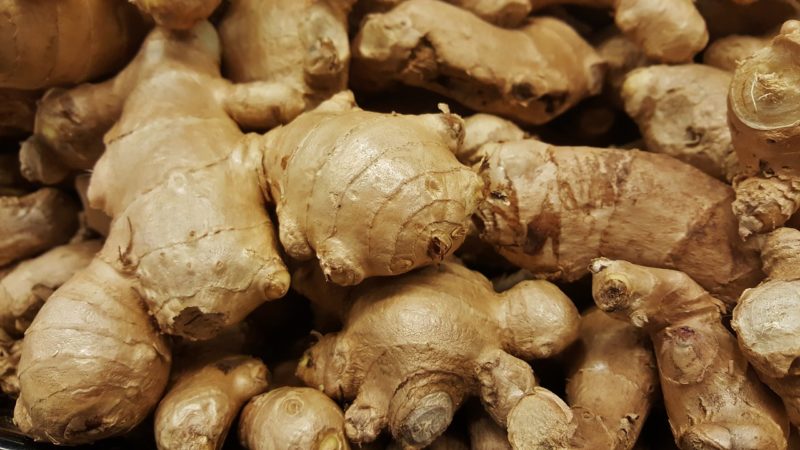
Fertilizer
Use a general liquid fertilizer every three weeks in the summer. When the weather is coole, I fertilize once a month.
Watering
Water regularly, but not so that the soil is waterlogged. If the ground is too wet, you risk root rot. In sweltering weather, mist ginger leaves with water to mimic the humid environment where it usually grows.
As the plant starts to die down in autumn, reduce watering to encourage rhizome growth.
Spacing
Ginger grows about 3 feet tall, so don’t plant it next to shorter veggies. Give ginger about 12-inches between plants.
Common Problems and Solutions for Growing Ginger
Bacterial Wilt
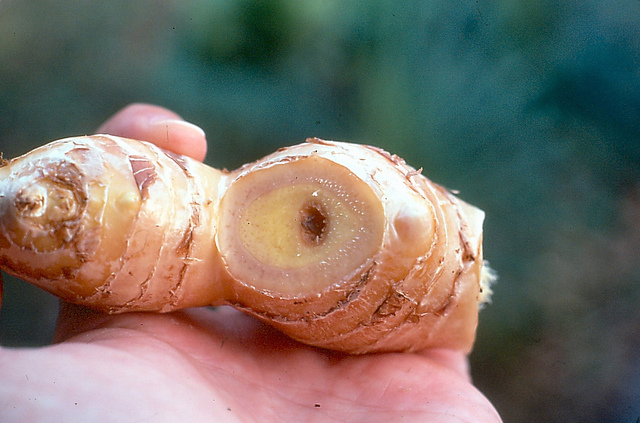
As the name
The best treatment is prevention. Rotate crops regularly and ensure the soil is free draining. Till your soil in the winter and solarize it if you’ve had wilt before
Fusarium
Fusarium is a fungus that invades ginger much as bacterial wilt does. It takes longer for the symptoms to show, so you may think your ginger is dying back for harvest. You’ll see yellow and stunted shoots and when you pull the rhizome, it won’t be water-soaked like wilt, but instead may have considerable dry rot. Just like bacterial wilt, once the yellowing occurs, the damage is already done.
This is another condition that can’t be cured, only prevented. Plant in healthy soil with good crop rotation and plant healthy rhizomes. Don’t rotate ginger with tomatoes, peppers, eggplant or tomatillo plants because they all suffer from the same pathogens.
Root-knot Nematode and Burrowing Nematode
Nematodes cause leaves to yellow and wilt, especially in hot weather. The plant will lose vigor, and if you dig down, the rhizome will have wet spots which rot rapidly.
Once again, prevention is the only cure. Ensure the soil is healthy, well fed and free draining. A nematode is a parasite, so treating the rhizome with hot water (123°F for 10 minutes) before planting may reduce the burrowing nematode problem.
Companion Plants for Ginger
The following are the best plants for growing with ginger:
- Peas
- Beans
- Kaffir Lime
- Chili Peppers
- Cilantro
- Lemon Grass
How to Harvest, Store and Use Ginger
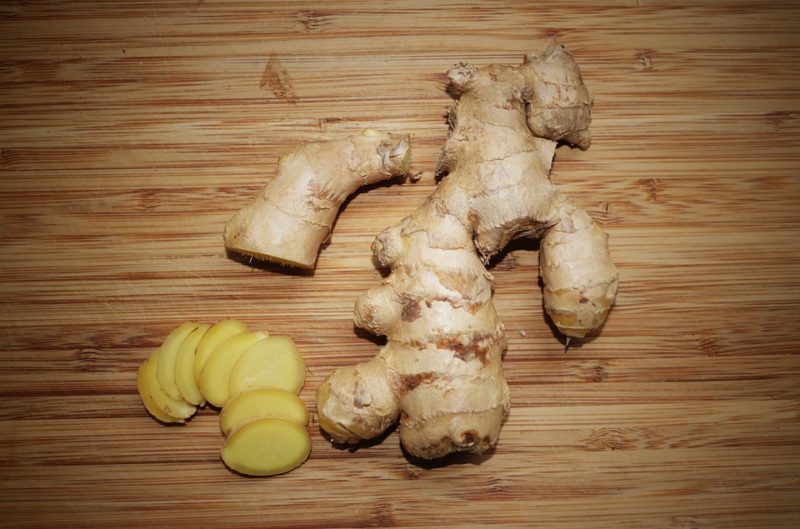
After about seven months or more, your ginger will be ready to pull from the soil. You can wait until the plant dies back in late fall, but I’m not that patient. I’ll check the size of the rhizome and pull the plant while it’s still green.
Store ginger unpeeled in a plastic bag. Press all the air out and put it in your veggie drawer. If you have sliced your ginger open, wrap it in a paper towel before putting it in the bag.
Using Ginger
No doubt you’ve had ginger in Asian dishes and desserts. There are endless recipes that you can use ginger in.
It’s also useful for medicinal purposes. I like to make tea with fresh ginger. Thinly slice two inches of ginger and add to one and a half cups of water. Bring to a boil and simmer for ten minutes. Strain into a cup and add a slice of lemon, juice of half a lemon and a teaspoon or more of honey.
Do you have any tips and tricks for those that are new to growing ginger? Do you have any great recipes to share with us on how to use your ginger either in recipes or as a medicinal plant?

